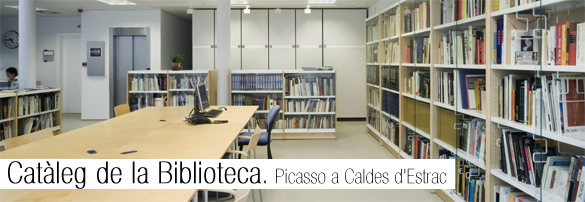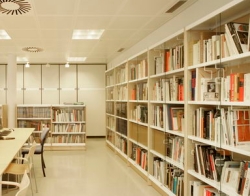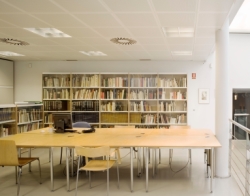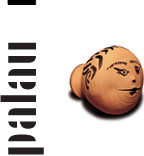| Títol : | Insomnia | | Tipus de document : | text imprés | | Autors : | Neus MIRÓ, Comissari | | Editorial : | Fundació Joan Miró Centre d´Estudis d´Art Contemporani (Barcelona) | | Data de publicació : | 2013 | | Nombre de pàgines : | 44 + 67 p. | | ll. : | Il. b/n. | | Dimensions : | 20x31 cm. | | Nota general : | Catàleg exposició.
| | Idioma : | Català (cat) | | | | Matèries : | Catàlegs exposicions/Museus i galeristes
| | | | Resum : | 22/03 - 16/06/2013
Fundació Joan Miró presents Insomnia, an exhibition about film as a material for contemporary art. Curated by Neus Miró, the show brings together several international artists who have explored film in the period from the sixties to the present.
The selected artists take an experimental approach to working with the properties of film, unfettered by the demands of the film industry. The works in the exhibition modify the conventions of cinema from three different perspectives: by analysing the convergence of photography and cinema, modifying traditional forms of projection and creating new kinds of viewing spaces, and renewing the models of film narrative.
From 22 March to 16 June, Fundació Joan Miró hosts Insomnia, a selection of works that have been conceived to be projected in museums and galleries, invading the exhibition space or inviting visitor participation. These art spaces have allowed artists greater freedom than the strict confines of the film industry and its distribution channels.
The exhibition includes works by Hollis Frampton, Stan VanDerBeek, Dan Graham, Ben Rivers and Stan Douglas, as well as pieces by Lis Rhodes and Peter Kubelka, whose work is exhibited here for the first time inSpain.
The title of the exhibition comes from the sentence that Hollis Frampton used to conclude his 1971 text analysing the relationship between cinema and still photography, and its distinctive features: “Film has finally attracted its own Muse. Her name is Insomnia.” Frampton argued that film became obsolete with the introduction of video, and then it re-appeared as an art form; this is why it needs a muse.
This new perspective led Frampton and the other artists included in this show to explore film language in a range of different ways: they worked on the relationship between moving images and still photography, they sought new forms of projection and created new spaces for cinema, or else they explored new film narratives that moved away from the usual storylines of fiction or documentary cinema.
Still Images and Moving Images
The exhibition starts out with Hollis Frampton and focuses on the relationship between photography and film, between still and moving images. In the two photographic works by Frampton, the artist attempts to capture movement in still images, in a reversal of the shift from photography to film. In (nostalgia), however, he creates a disjunction between the image and the voice-over in order to suggest a clash between the past, the present and the future.
Experimentation with Projection and New Viewing Spaces
The second part of the exhibition starts by bringing together two artists who have explored the possibilities of projection in ways that create new relationships between the images and the spectator. Light Music, by Lis Rhodes, is an installation that consists of projections of geometric patterns on two screens facing each other. The space between the two projectors and the screens becomes a performative space where viewers interact with the images.
This is followed by two works by Peter Kubelka, an experimental filmmaker who also explores new ways of presenting film, and who reduces his work to the basic components of cinema: light, darkness, sound and silence. His film Arnulf Rainer is screened in a totally black room.
This part of the show continues with projects by two artists who have explored the relationship between viewers and moving images by designing new spaces in which to experience film. The works by Stan VanDerBeek and Dan Graham transform the exhibition space into a sensory space.
As well as three films by VanDerBeek, the exhibition includes images and information relating to his Movie-Drome, and large domed screening space that he designed in 1963. There is also an architectural model of Dan Graham’s Cinema, where a projection screen is designed to be integrated into a typical office building.
Film Narrative
The third and final section of the exhibition, entitled ‘Infinite Cinema’, looks at works that subvert conventional cinematic narrative. On one hand, Ben Rivers presents Ah, Liberty!, a film that is based on the observation of reality but avoids the documentary genre. On the other, Stan Douglas explores the possibilities of the construction of stories in the video-installation Video, which disrupts the logic of canonical strategies of fiction.
One-Day Conference
A one-day Conference will be held on 22 March as part of the exhibition, with the participation of David Campany, theorist and lecturer at the University of Westminster in London and author of one of the essays in the exhibition catalogue; Alexander García Düttman, theorist and Professor of Philosophy and Visual Culture at Goldsmiths, University of London; Antonio Alberto Weinrichter, theorist and associate professor at Universidad Carlos III in Madrid; Neus Miró, curator of the exhibition; and two of the participating artists, Lis Rhodes and Peter Kubelka, who will present their work and talk about their relationship with film.
| | Nota de contingut : | Obres de:
Dan Graham
Peter Kubelka
Hollis Frampton
Lis Rhodes
Stan Vanderbeek
Stan Douglas
Ben Rivers
Presentació:
Rosa Maria Malet
Textos de:
Dadid Capmany
Neus Miró (ed.)
Noah M. Elcott
Maxa Zoller
Federico Windhausen
Joana Hurtado |
Insomnia [text imprés] / Neus MIRÓ, Comissari . - Barcelona : Fundació Joan Miró Centre d´Estudis d´Art Contemporani, 2013 . - 44 + 67 p. : Il. b/n. ; 20x31 cm.. Catàleg exposició.
Idioma : Català ( cat) | | | Matèries : | Catàlegs exposicions/Museus i galeristes
| | | | Resum : | 22/03 - 16/06/2013
Fundació Joan Miró presents Insomnia, an exhibition about film as a material for contemporary art. Curated by Neus Miró, the show brings together several international artists who have explored film in the period from the sixties to the present.
The selected artists take an experimental approach to working with the properties of film, unfettered by the demands of the film industry. The works in the exhibition modify the conventions of cinema from three different perspectives: by analysing the convergence of photography and cinema, modifying traditional forms of projection and creating new kinds of viewing spaces, and renewing the models of film narrative.
From 22 March to 16 June, Fundació Joan Miró hosts Insomnia, a selection of works that have been conceived to be projected in museums and galleries, invading the exhibition space or inviting visitor participation. These art spaces have allowed artists greater freedom than the strict confines of the film industry and its distribution channels.
The exhibition includes works by Hollis Frampton, Stan VanDerBeek, Dan Graham, Ben Rivers and Stan Douglas, as well as pieces by Lis Rhodes and Peter Kubelka, whose work is exhibited here for the first time inSpain.
The title of the exhibition comes from the sentence that Hollis Frampton used to conclude his 1971 text analysing the relationship between cinema and still photography, and its distinctive features: “Film has finally attracted its own Muse. Her name is Insomnia.” Frampton argued that film became obsolete with the introduction of video, and then it re-appeared as an art form; this is why it needs a muse.
This new perspective led Frampton and the other artists included in this show to explore film language in a range of different ways: they worked on the relationship between moving images and still photography, they sought new forms of projection and created new spaces for cinema, or else they explored new film narratives that moved away from the usual storylines of fiction or documentary cinema.
Still Images and Moving Images
The exhibition starts out with Hollis Frampton and focuses on the relationship between photography and film, between still and moving images. In the two photographic works by Frampton, the artist attempts to capture movement in still images, in a reversal of the shift from photography to film. In (nostalgia), however, he creates a disjunction between the image and the voice-over in order to suggest a clash between the past, the present and the future.
Experimentation with Projection and New Viewing Spaces
The second part of the exhibition starts by bringing together two artists who have explored the possibilities of projection in ways that create new relationships between the images and the spectator. Light Music, by Lis Rhodes, is an installation that consists of projections of geometric patterns on two screens facing each other. The space between the two projectors and the screens becomes a performative space where viewers interact with the images.
This is followed by two works by Peter Kubelka, an experimental filmmaker who also explores new ways of presenting film, and who reduces his work to the basic components of cinema: light, darkness, sound and silence. His film Arnulf Rainer is screened in a totally black room.
This part of the show continues with projects by two artists who have explored the relationship between viewers and moving images by designing new spaces in which to experience film. The works by Stan VanDerBeek and Dan Graham transform the exhibition space into a sensory space.
As well as three films by VanDerBeek, the exhibition includes images and information relating to his Movie-Drome, and large domed screening space that he designed in 1963. There is also an architectural model of Dan Graham’s Cinema, where a projection screen is designed to be integrated into a typical office building.
Film Narrative
The third and final section of the exhibition, entitled ‘Infinite Cinema’, looks at works that subvert conventional cinematic narrative. On one hand, Ben Rivers presents Ah, Liberty!, a film that is based on the observation of reality but avoids the documentary genre. On the other, Stan Douglas explores the possibilities of the construction of stories in the video-installation Video, which disrupts the logic of canonical strategies of fiction.
One-Day Conference
A one-day Conference will be held on 22 March as part of the exhibition, with the participation of David Campany, theorist and lecturer at the University of Westminster in London and author of one of the essays in the exhibition catalogue; Alexander García Düttman, theorist and Professor of Philosophy and Visual Culture at Goldsmiths, University of London; Antonio Alberto Weinrichter, theorist and associate professor at Universidad Carlos III in Madrid; Neus Miró, curator of the exhibition; and two of the participating artists, Lis Rhodes and Peter Kubelka, who will present their work and talk about their relationship with film.
| | Nota de contingut : | Obres de:
Dan Graham
Peter Kubelka
Hollis Frampton
Lis Rhodes
Stan Vanderbeek
Stan Douglas
Ben Rivers
Presentació:
Rosa Maria Malet
Textos de:
Dadid Capmany
Neus Miró (ed.)
Noah M. Elcott
Maxa Zoller
Federico Windhausen
Joana Hurtado |
|



 Refinar la cerca
Refinar la cerca
Insomnia / Neus MIRÓ




